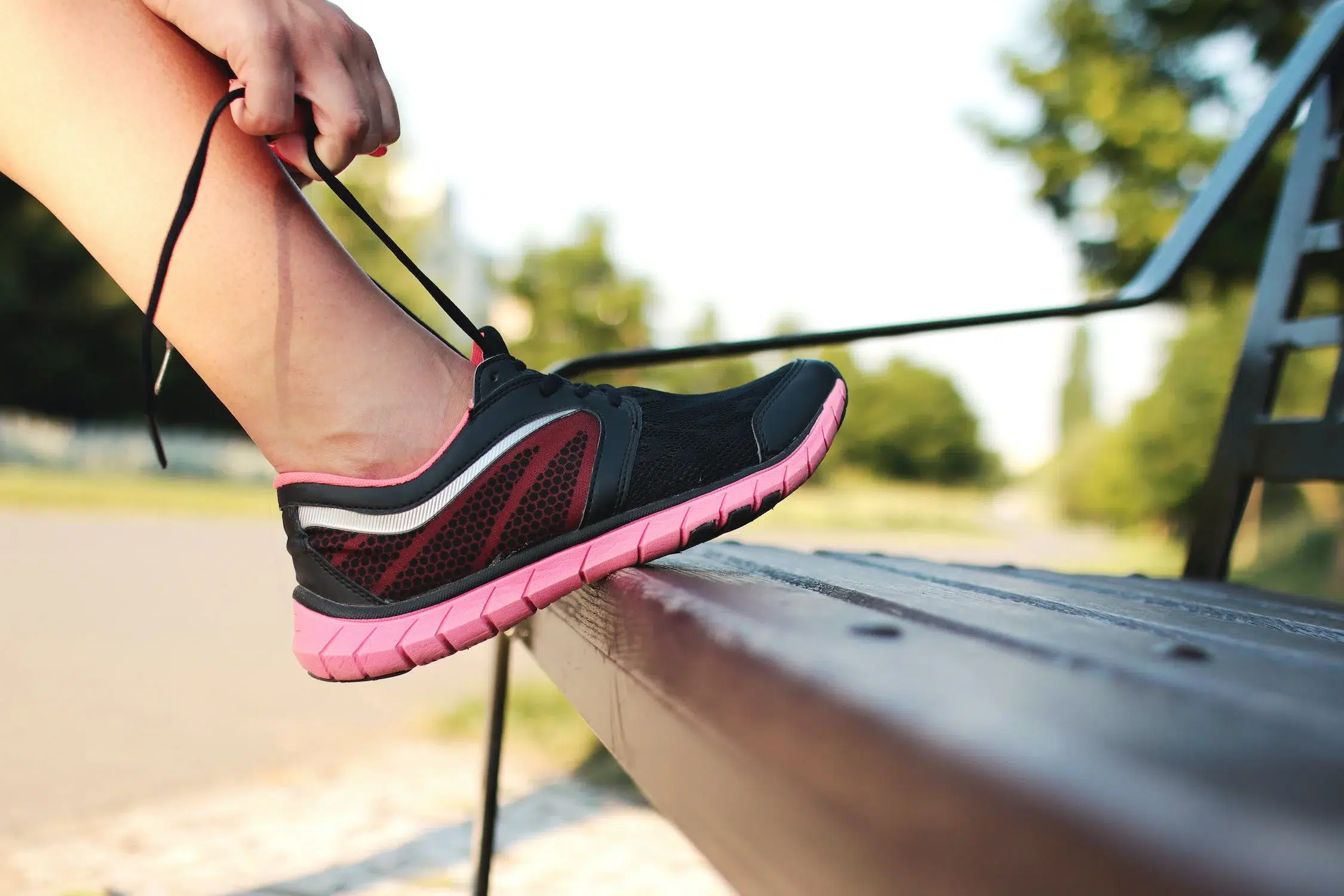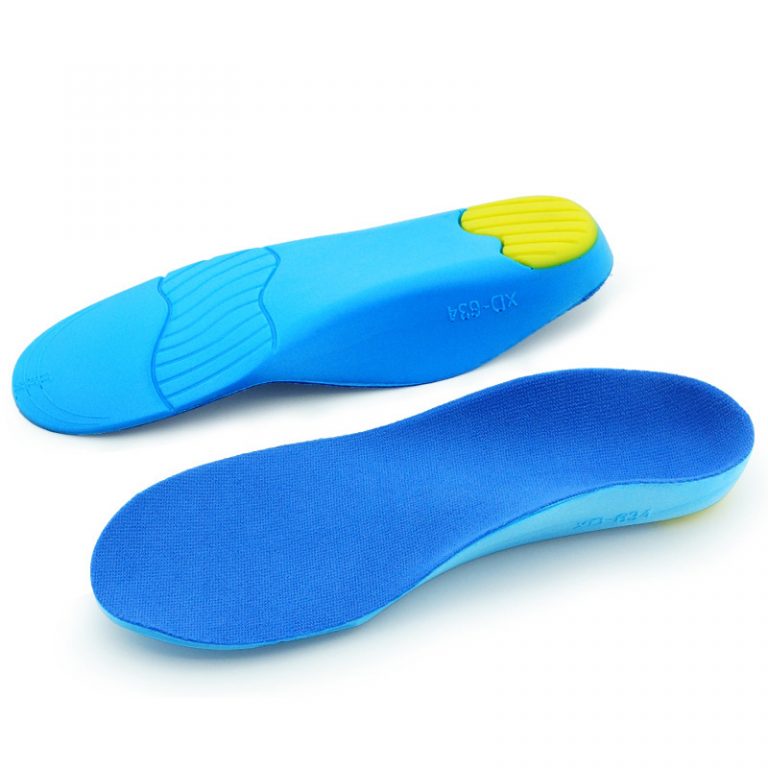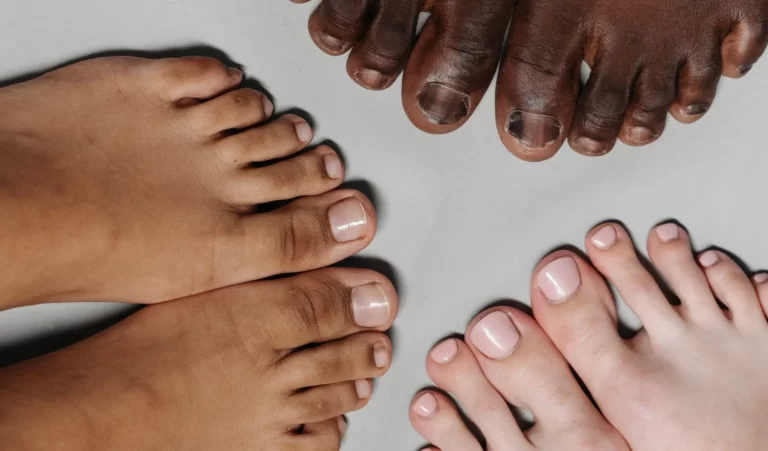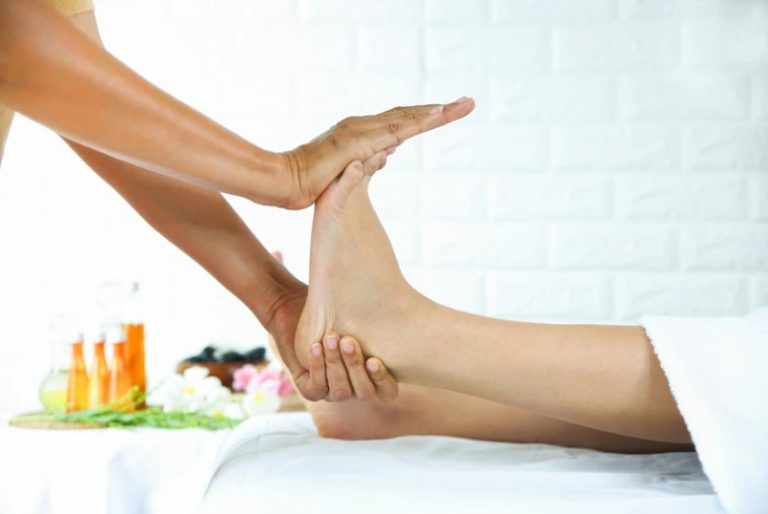Antibacterial Insoles: A Miracle Cure or Marketing Myth?
Antibacterial insoles are shoe inserts. They have antimicrobial properties to prevent foot odor and bacterial growth. They work by stopping the growth of microorganisms. These include bacteria and fungi. These organisms can cause infections, odors, and wear in the insoles and shoes.
Antibacterial insoles contain active ingredients that are toxic to microbes but safe for the wearer. Common antimicrobial agents include silver nanoparticles, activated carbon, and silica dioxide. They also include triclosan and essential oils like tea tree oil. These agents are embedded into the insole material or applied as a coating.
The insole base is often made of materials like polyurethane foam, gel, or an open cell foam substrate. This provides cushioning and shock absorption. The antimicrobial agents then prevent microbe growth within the moist environment of the insole, shoe, and around the foot. This helps eliminate foul odors and bacteria that can cause infections, athletes foot, or toenail fungus.
Benefits of Antibacterial Insoles
Antibacterial insoles have many benefits for your feet. They reduce odor, stop bacteria and fungi, and help foot health.

Odor Reduction
One of the main benefits of antibacterial insoles is reducing foot odor. The insoles are infused with antimicrobial substances like silver ions that inhibit the growth of bacteria on the feet. This bacteria is responsible for breaking down sweat and causing unpleasant odors. By limiting bacteria, antibacterial insoles reduce foot odor significantly.
Bacteria and Fungus Prevention
Antibacterial insoles create an environment that is hostile to microbes like bacteria and fungus. Substances like silver ions or activated carbon make it difficult for these microbes to thrive and multiply. This helps prevent issues like athlete’s foot, a fungal infection of the feet. For people prone to foot infections, such as bacteria or fungi, antibacterial insoles can help prevent them.
Foot Health
The antimicrobial effects of antibacterial insoles also help promote overall foot health. Killing bacteria and fungus keeps feet healthy. It cuts the risk of infections that cause irritation. The cushioning in many antibacterial insoles also provides comfort and support. This improves conditions like plantar fasciitis that are aggravated by excessive impact on the feet. With cleaner and more comfortable feet, users experience better foot health with the use of antibacterial insoles.
Uses
Antibacterial insoles have several useful applications:
Athlete’s Foot Prevention

Athlete’s foot, also known as tinea pedis, is a common fungal infection of the feet caused by fungi called dermatophytes. These fungi thrive in warm, moist environments like pools, locker rooms and inside shoes. Using antibacterial insoles can help prevent athlete’s foot by inhibiting the growth of fungi and bacteria inside shoes that can cause infections. The insoles have ingredients like silver ions, activated carbon, and zinc oxide. They kill microbes. This reduces the risk of contracting athlete’s foot from contaminated footwear.
General Hygiene
Antibacterial insoles help promote foot hygiene by reducing odor-causing bacteria growth. Feet sweat throughout the day inside shoes and this sweat soaks into the insoles. The dark, moist environment allows odor-causing bacteria like Bacillus and Micrococcus to thrive. The antimicrobial ingredients in antibacterial insoles inhibit the growth of these bacteria to prevent foul foot odors. This helps keep feet and shoes fresher.
Diabetic Foot Care
People with diabetes often have reduced circulation and nerve sensitivity in their feet. This makes them prone to foot ulcers and infections that can become serious if left untreated. Using antibacterial insoles can prevent bacterial and fungal infections. They do this by creating an antimicrobial environment inside the shoes. This protective effect helps those with diabetes avoid complications like diabetic foot infections that can lead to amputation. The insoles provide a proactive foot care measure for people at higher risk of infections.

Technologies
Antibacterial insoles utilize various technologies to inhibit bacterial growth and prevent odors:
– Bamboo Charcoal:
Bamboo charcoal comes from bamboo plants. They are known for their natural antibacterial qualities. By heating the bamboo at high temperatures, these properties become even more concentrated. Bamboo charcoal is used as an insole material. It can stop bacteria growth in shoes. Bacteria cause foot odor and possible infections.
– Silver nanoparticles:
Tiny particles of silver are embedded in the insole material. Silver is a natural antibacterial agent that disrupts bacterial cell walls and DNA. The nanoparticles provide sustained release of silver ions.
– Zinc pyrithione:
This antimicrobial compound interferes with bacterial metabolism and replication. It is often used in anti-dandruff shampoos. In insoles, it prevents odor-causing bacteria from thriving.
– Triclosan:
An antibacterial and antifungal agent that inhibits enzyme functions in bacteria. It is incorporated into polymers during manufacturing. However, there are concerns over its safety and potential to create resistant bacteria.
– Chitosan: Derived from crustacean shells, this natural polymer has antimicrobial properties. It binds to bacterial cells and interferes with their growth. Chitosan also absorbs moisture to prevent odors. Some find it to be a safer alternative to synthetic chemicals.
Manufacturing Process
The process to make antibacterial insoles has several key steps. They add the antibacterial properties to the insole material.
Insole Materials
The base material for antibacterial insoles is often a foam cushioning layer. It is made from materials like EVA (ethylene vinyl acetate) or PU (polyurethane). These provide comfort and support. The top fabric layer may be a moisture-wicking textile or leather.
Antibacterial Additive Integration
Antibacterial substances are added into the base foam or fabric layers to inhibit bacterial growth. Common antibacterial additives include:
– Activated carbon (Bamboo Charcoal)- Porous carbon traps bacteria and other microbes.
– Silver nanoparticles – Tiny particles of silver release ions that destroy bacteria cells.
– Triclosan – An antibacterial and antifungal agent that prevents organism growth.
These additives are mixed directly into the main insole materials during manufacturing. The additives are dispersed evenly so the entire insole has antibacterial properties.
Quality Testing
The finished insoles undergo quality assurance testing to ensure proper antibacterial function. Samples are inoculated with bacteria and then tested to verify a 99% reduction rate after a 24 hour period based on industry standards. This validates the antibacterial effectiveness before insoles are packaged and shipped. Regular third-party lab testing further ensures reliable performance.
Effectiveness
Antibacterial insoles have been shown to reduce bacteria growth and transfer in multiple studies. One study published in the Journal of Applied Microbiology tested insoles with antibacterial properties. The insoles were from three big brands. The study lasted 4 weeks. They found that the insoles reduced bacteria levels in shoes by over 90% compared to regular insoles without antimicrobial properties. Users of antibacterial insoles also report reduced foot odor at the end of the day.
However, antibacterial insoles may have limited effectiveness in certain cases. These products often use antimicrobial ingredients, like silver nanoparticles. They work by releasing ions. The ions disrupt bacterial cell walls. But some bacteria strains have developed resistance to silver over time. The antibacterial properties also degrade over months of wear, so insoles need to be replaced regularly. Sweat and dirt can cover the insole surface, preventing contact between microbes and antimicrobial agents. Proper hygiene habits like washing feet daily are still important when using these products.
For most users, studies and reviews show antibacterial insoles can significantly cut down on odor and bacteria growth when worn regularly. But they should be considered one part of overall foot hygiene rather than a solve-all solution. Replacing insoles per the manufacturer’s recommendations helps maintain effectiveness. Those with severe foot odor issues may need to use the insoles in combination with other treatments.
Considerations When Choosing Antibacterial Insoles

When selecting antibacterial insoles, there are several factors to keep in mind:
Cost
Antibacterial insoles can range widely in price from $10 to $50 or more. The cost depends on the materials and technologies used. Copper-infused insoles tend to be more expensive while those treated with silver ions are moderately priced. It’s important to balance cost with expected longevity when making a selection.
Fit and Comfort
For maximum comfort and prevention of conditions like blisters, it’s critical to get a proper fit. Consider if you need a full insole or just an insert for the heel and arch. Measure your feet and check sizing charts to get the ideal size and shape. Trying insoles on with your regular shoes can check comfort.
Odor Prevention Limitations
While antibacterial insoles help reduce foot odor, they cannot eliminate odor on their own. Proper hygiene like washing feet daily is still required. Insoles that only treat some areas may not prevent odor from sweaty toes. Fully infused insoles tend to provide the most odor protection.
Safety Regulations
Some antibacterial technologies utilize potentially toxic metals like copper. Ensure any insoles purchased meet safety standards for prolonged skin contact. Children may be more vulnerable to metal absorption. Seek reputable brands that adhere to manufacturing regulations.
Popular Brands of Antibacterial Insoles
There are a few major brands that produce antibacterial insoles. Here are some of the most popular options:
Roamingfeet Bamboo Charcoal Antibacterial Insoles
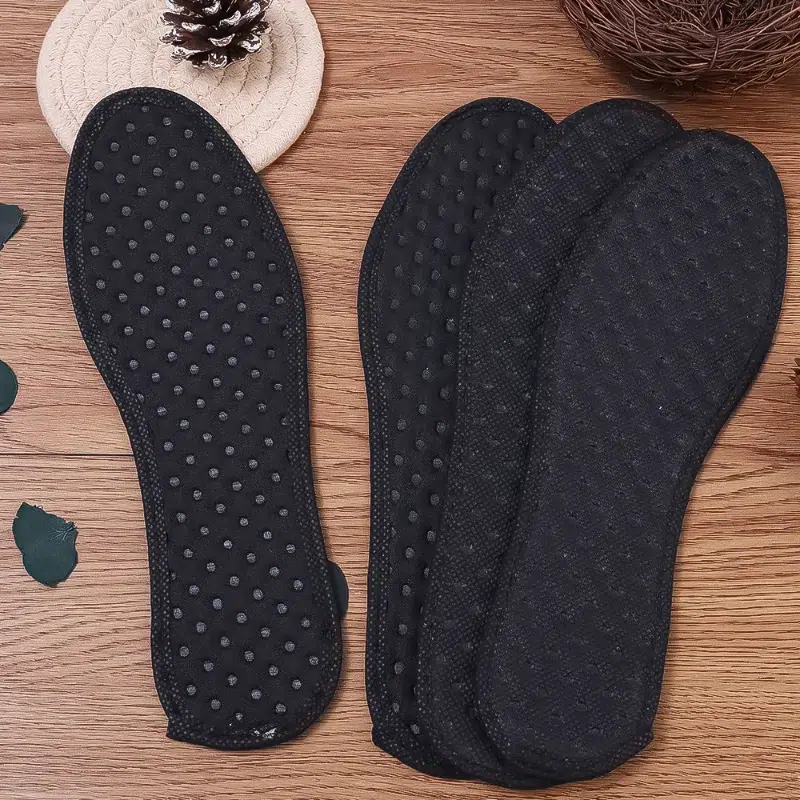
The Bamboo Charcoal Antibacterial Insoles are an impressive footcare solution. They guard against foot infections well because of their natural antibacterial properties. The absorbent bamboo charcoal tackles odors and sweat brilliantly. It keeps my feet fresh all day. They are also environmentally sustainable. This fits with my love for eco-friendly products. They’re a game-changer in foot hygiene and comfort. Highly recommended for anyone seeking a fresh, sustainable approach to foot health.
Dr. Scholl’s Odor-X
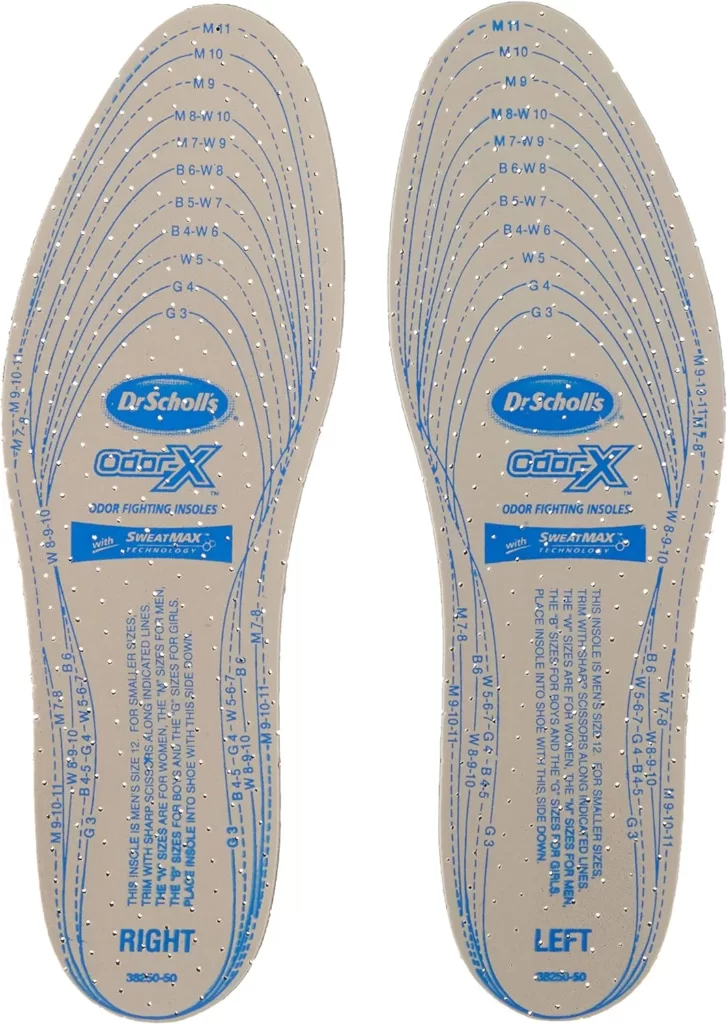
Dr. Scholl’s is one of the leading brands when it comes to antibacterial insoles. Their Dr. Scholl’s Odor-X line contains antimicrobial ingredients. These include silver and tea tree oil. They help fight odor and bacteria growth in shoes. The insoles have an absorbent top layer to wick away moisture and odor. They come in various styles like sport, work, and dress.
Superfeet GREEN Antimicrobial insole
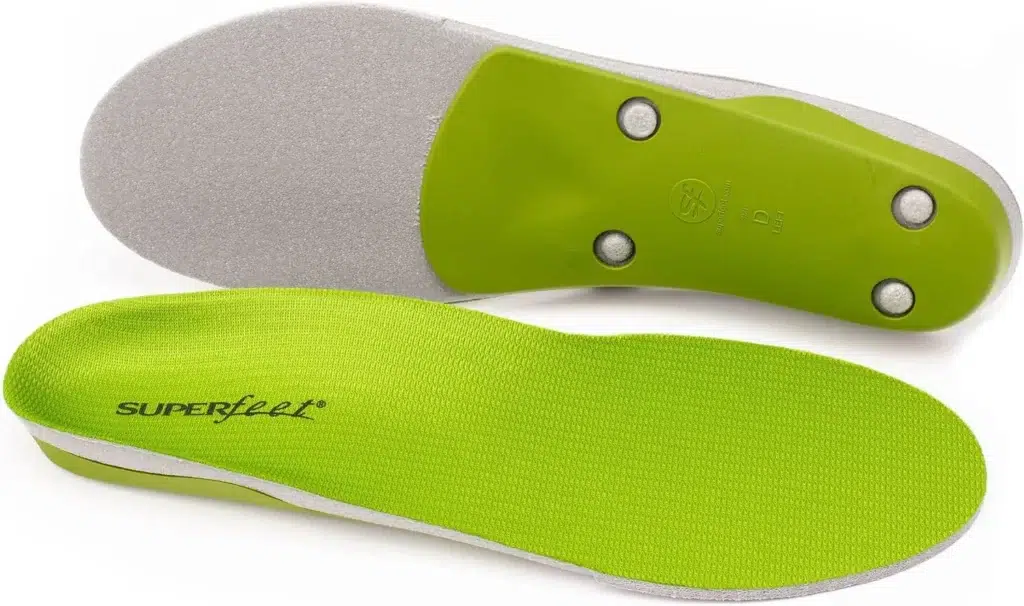
Superfeet offers the GREEN Antimicrobial insole. It has an EPA-registered antimicrobial blended into the insole. This helps inhibit the growth of bacteria, mold, and fungus. The deep heel cup provides stability and support. The insoles work well for active lifestyles and can be trimmed to fit different shoe sizes.
Sof Sole Athlete models
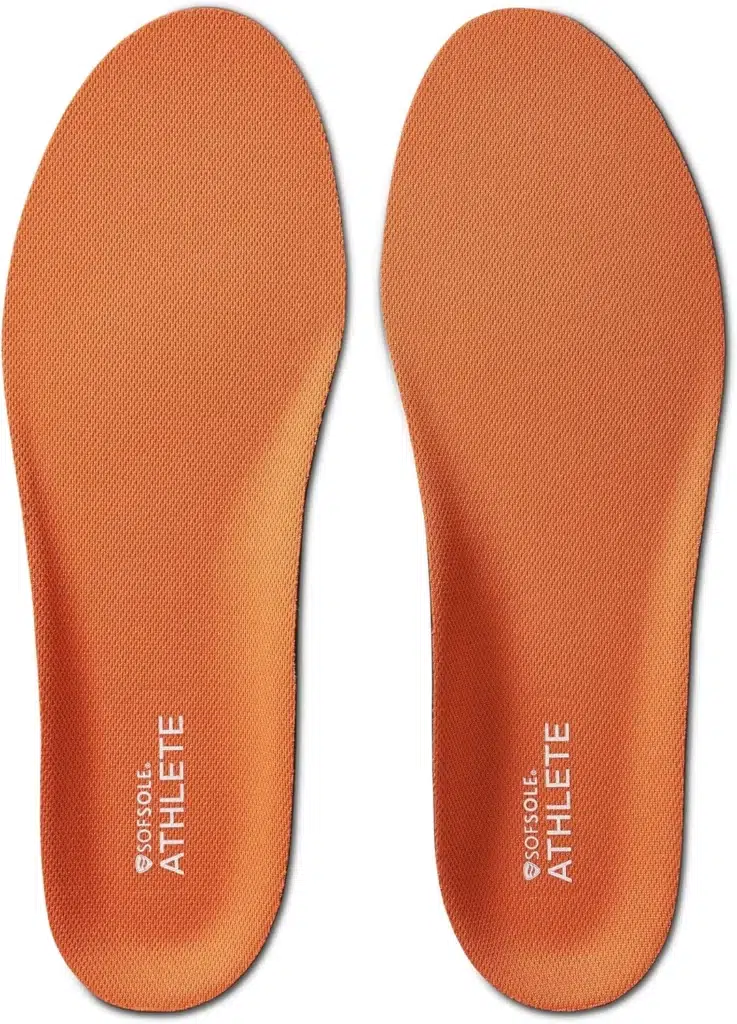
Sof Sole’s Sof Sole Athlete models contain an antimicrobial treatment to help reduce foot odor. The insoles have Hydrologix moisture-wicking fabric to keep feet dry. They provide arch support and are designed to be long-lasting. The insoles can be used for running, cross-training, hiking, and more. Sof Sole offers both full-length and 3/4 length sizes.
Alternatives to Antibacterial Insoles
While antibacterial insoles can help control foot odor and bacterial growth, they aren’t the only option. Here are some alternatives to consider:
– Replace Regularly: The bacteria and sweat that cause odors can build up over time. Replacing insoles every 3-6 months helps remove this buildup before it becomes an issue. Look for insoles that are washable as well.
– Disinfect: Using a disinfectant spray or wipe on your insoles periodically can help kill bacteria and control odors. Let them fully dry after disinfecting.
– Switch Shoes: Rotating between different pairs of shoes allows them to fully dry out between wears. Bacteria thrive in damp environments like sweaty shoes. Giving shoes a day off reduces this bacterial growth.
– Odor Absorbers: There are various odor absorbing products that can be used in shoes when not wearing antibacterial insoles. These include charcoal bags, baking soda, dryer sheets, and more. Place them in shoes overnight or when not in use to help absorb odors.
Conclusion
Antibacterial insoles can provide many benefits for your feet, shoes, and overall health. They reduce odor, bacteria, and fungus. They also absorb moisture to keep your feet dry and comfortable. The copper, silver ions, and Bamboo Charcoal work nonstop. They inhibit microbial growth. Other technologies do this too. Studies show antibacterial insoles work. They reduce bacteria and fungi when used properly. But, they may not fully stop odors or infections. This is especially true without extra hygiene practices. Popular brands like Sof Sole and Dr. Scholl’s offer convenient antibacterial insole options. Alternatively, you can control odors and bacteria by replacing your insoles often. You can also use UV sterilizers. Antibacterial insoles are useful. They can promote foot health and hygiene. Use them as part of your regular foot care.

